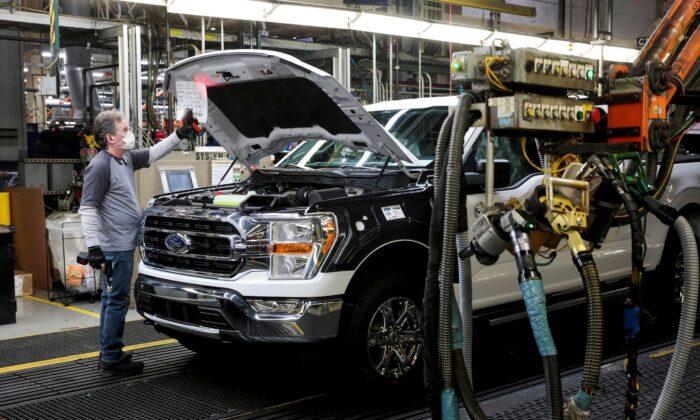The post-pandemic glut in inventories and a growing trade deficit caused by global supply chains are key culprits, though overall economic momentum has slowed down after the economy contracted 1.3 percent in the first half of the year.
The ISM’s index dropped by 0.2 percent, to 52.8 percent, the lowest reading since June 2020, from a reading of 53.0 percent in June, above the earlier forecast of 52 percent.
Manufacturing accounts for 11.9 percent of the U.S. economy, and any reading above 50 indicates expansion in that sector.
The report also showed that the operational costs for manufacturers fell to a two-year low, with some experts claiming that the economy may have hit peak inflation.
The global supply chain crisis appears to be easing for now, as deliveries of supplies have improved, prices have begun to flatten, and as inventories have grown at a faster pace compared with two months ago.
The ISM’s measure of supplier deliveries dropped, to 55.2 from 57.3 in June.
Consumer demand continued to weaken in July, as new orders slumped to a reading of 48 percent, down from 49.2 percent in June, leading the production index to take a hit due to shrinking demand, declining by 1.4 percent, to 53.5 percent from 54.9 percent in June.
Shifting Consumers and Different Hiring Rates
The cool down in demand is reflecting both a shift in consumer spending, from goods to services, and the impact of rising interest rates.“There are signs of new order rates softening, as panelists are increasingly concerned about excessive inventories and continuing record-high lead times,” said Timothy Fiore, chairman of the ISM Manufacturing Business Survey Committee.
“Employment activity remained strongly positive in spite of the uncertainty with new order rates.”
Although the survey reported that employment in manufacturing had risen, to 49.9 percent, the figures are in their third straight month of contraction.Companies continue to hire at relatively high rates for now, and there have been few signs of widespread layoffs outside of the real estate and tech sector.
Hiring freezes and the reduction of employees through attrition have yet to become a concern, as many manufacturers are still expressing difficulty in finding workers, with many positions being left unfilled.
“Although an overwhelming majority of survey panelists again indicate their companies are hiring, they are still struggling to meet labor management plans,” said Fiore.
For example, four out of the six major manufacturing industries, such as the energy sector, computers/electronics, transportation equipment, and machinery, have reported moderate-to-strong growth in July.
The food-processing industry reported that grocers and food distributors are apparently slashing product orders in an effort to reduce inventory, while the textile industry is facing continued delivery and staff shortages that have cut into profits.
Rising inflation is one of the biggest complaints indicated by the survey, though overall price increases for inputs have started to moderate considerably.
Chemical manufacturers, for example, have reported that inflation is slowing down business, along with an excess of raw materials due to the prior supply chain issues, combined with a slowdown in orders.
The Federal Reserve, on July 27, raised its policy rate by another 75 basis points and has raised the rate altogether by 225 basis points since March, as it contends with high inflation.





